Breadcrumb
News archives
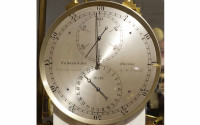
Global Warming Is Influencing Global Timekeeping
One consequence is giving society a few extra years to prepare for a potential Y2K-style glitch
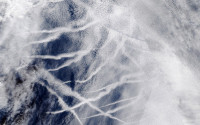
How To Determine if a Potential Geoengineering Strategy Could Work?
Scientists detail research needed to assess viability, risks of marine cloud brightening
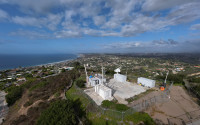
EPCAPE Observations at Scripps Pier, Mt. Soledad Wrap Up
Marine cloud-aerosol campaign now enters a phase of energetic data analysis
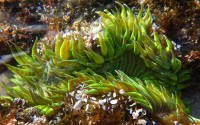
Study Illuminates the Protective Role of Fluorescence in Neon-Colored Sea Anemones
Fluorescent proteins shown to protect sea anemone cells from stress
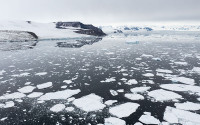
New Paper Pinpoints Key Role of NASA Satellites in Monitoring Earth's Vital Signs
All-woman team of researchers shows how 20 years of laser-based observations have improved our understanding of a changing planet
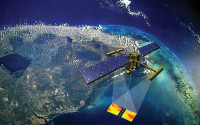
Science to Watch: SWOT
Oceanographers are raving about a new tool that redefines how we understand ‘sea level.’ Here’s why.
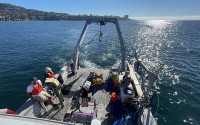
Oceanographers Explore Turbulence in the Depths of La Jolla Canyon
Researchers with Scripps Oceanography’s MOD group are using pink dye and a suite of ocean tech to study underwater dynamics off La Jolla
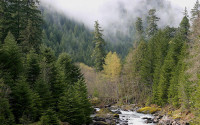
Scripps Oceanography to Help Lead New Earthquake Research Center
The multi-institution center will study Cascadia subduction zone to improve earthquake resilience in the Pacific Northwest
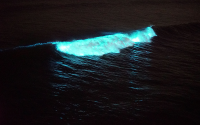
Historic Red Tide Event of 2020 Fueled by Plankton Super Swimmers
The swimming ability of dinoflagellates lends them a competitive advantage over other plankton species, contributing to harmful algal blooms
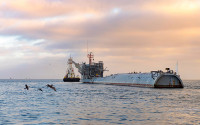
Storied Research Platform is Retired
Scripps Oceanography’s 61-year-old FLIP towed to sea for the final time
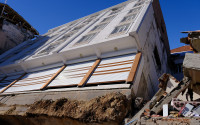
The Unexpected Physics Behind Turkey’s Devastating 2023 Earthquakes
The findings could have important takeaways for assessing seismic hazards in California
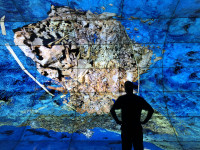
UNESCO Recognizes International Team for Sustainable Underwater Archaeology Efforts
UC San Diego researchers and Mexican colleagues lauded for work on the Yucatán Peninsula
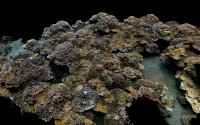
Expanding Access to Coral Reef Conservation Technology
Scripps researchers recommend how conservationists and scientists can use 3D modeling technology called large-area imaging
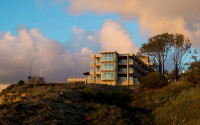
UC San Diego Celebrates Opening of the Ted and Jean Scripps Marine Conservation and Technology Facility
New facility is dedicated to marine biodiversity and conservation research, discovery and education
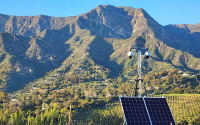
ALERTCalifornia Launches to Provide Essential Tools to Understand and Adapt to Natural Disasters
UC San Diego’s ALERTCalifornia public safety program leverages novel technology and cutting-edge research to understand the causes, behavior and aftereffects of wildfires and other natural disasters in the Golden State
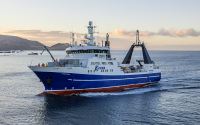
Research Expedition to Probe Mysteries of the Deep off New Zealand
Scripps Oceanography and collaborators to deploy Deep Argo floats and other ocean tech
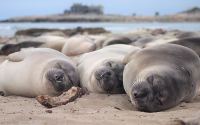
Elephant Seals Drift Off to Sleep While Diving Far Below the Ocean Surface
Brainwave patterns show elephant seals take short naps while holding their breath on deep dives, averaging just 2 hours of sleep per day while at sea
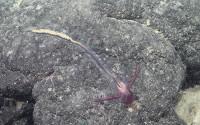
“Bizarre” Yoda Acorn Worm Makes Top 10 Marine Species List
Scripps Oceanography scientists officially described the deep-sea worm in 2022; now it’s among the top 10 new species acknowledged by the World Register of Marine Species
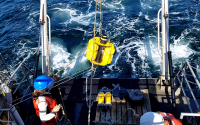
New Study Examines Noise Reduction from Retrofitted Shipping Vessels
Scripps Whale Acoustics Lab teams up with shipping giant Maersk to identify vessel designs that reduce radiated noise
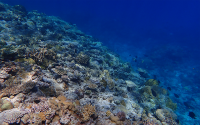
New Study Provides First Comprehensive Look at Oxygen Loss on Coral Reefs
Scripps Oceanography scientists and collaborators provide first-of-its-kind assessment of hypoxia, or low oxygen levels, across 32 coral reef sites around the world
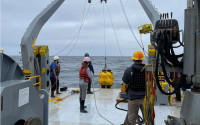
"Denoising" a Noisy Ocean
Scripps Oceanography researchers use machine learning to listen for specific fish sounds
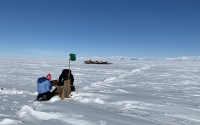
Researchers Extract First Layered Lake-Sediment Sample from Subglacial Antarctica
Scripps Oceanography alumnus and colleagues describe the sample's importance in understanding past dynamics of the Antarctic ice sheet and its ecosystems

Scripps Oceanography Leads Sessions on Climate Change, Space, and Blue Tech at SXSW 2023
Expanded climate change programming at Conference focuses on impacts and solutions

Blue Technology Gets a Major Showcase at Oceanology International Americas Conference
Scripps Oceanography scientists and leaders to feature ocean technology and startBlue accelerator throughout conference and exhibit
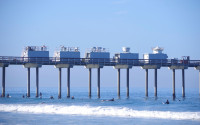
Scripps Pier, UC San Diego Mount Soledad Facility to Host Coastal Marine Cloud Study
Year-long field campaign launches Feb. 15 to study the marine clouds that shade and cool the earth
Pagination
Sign Up For
Explorations Now
explorations now is the free award-winning digital science magazine from Scripps Institution of Oceanography. Join subscribers from around the world and keep up on our cutting-edge research.